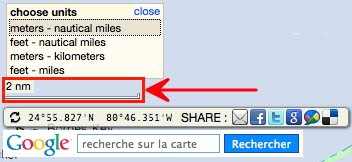NOAA and Google entered into a Cooperative Research and Development Agreement (CRADA) to increase access and reach of NOAA data through the expertise and innovative tools at Google.
This map and its products are a result of collaboration between NOAA and Google and establish a foundation for improving data and product integration and access.
This map and its products are a result of collaboration between NOAA and Google and establish a foundation for improving data and product integration and access.
From GoogleLatLon
Come on a tour to never-before explored Indonesian waters.
The INDEX-SATAL 2010 Expedition is the first-ever joint ocean research voyage by the Republic of Indonesian and the United States.
To experience it yourself, watch the Google Earth YouTube video tour above or explore the area more interactively with the Google Earth plug-in on our Ocean Showcase.
Much of the Coral Triangle remains unexplored, and this partnership aims to help reverse the decline of coral reefs in the area and to protect natural resources.
The expedition began in the SATAL region around two island chains stretching north of Sulawesi.
It was undertaken by scientists from the USA National Oceanic and Atmospheric Administration, Indonesia’s Ministry of Marine Affairs and Fisheries, and the Indonesian Agency for the Assessment and Application of Technology.
“Telepresence” was used to send data in real time to scientists who stood watch at Exploration Command Centers in Jakarta and Seattle.
This same technology brought the excitement of the expedition to visitors at the Exploratorium in San Francisco as well.
Little Hercules, a remotely operated exploration vehicle, descended 6000 feet under the sea to capture images and videos of exciting sights like hydrothermal vents and creatures like the deep sea octopus seen below:
 Mapping and discovery data from expeditions like this will help all organizations involved better understand ocean resources and how to protect them.
Mapping and discovery data from expeditions like this will help all organizations involved better understand ocean resources and how to protect them.More information about the still mysterious ocean will ultimately further economic and environmental initiatives such as the management of sustainable fisheries, the conservation of the marine environment and the preservation of fragile corals.
Dive deeper at Oceanexplorer.noaa.gov, or download this KML for viewing in Google Earth.
Links :
- NOAAnews : U.S. and Indonesian Scientists find biodiversity runs deep in Sulawesi Sea
- FederalNewsRadio : NOAA expedition uses telepresence to transmit real-time HD video from seafloor to scientists ashore
- MSNBC : Coral Triangle trip reveals possible new marine species
- http://oceanexplorer.noaa.gov/explorations/rss/google_earth.html


